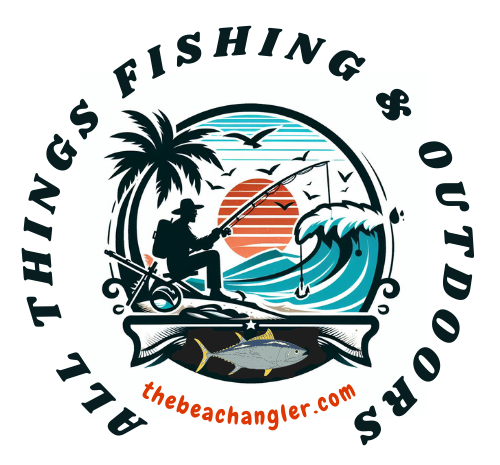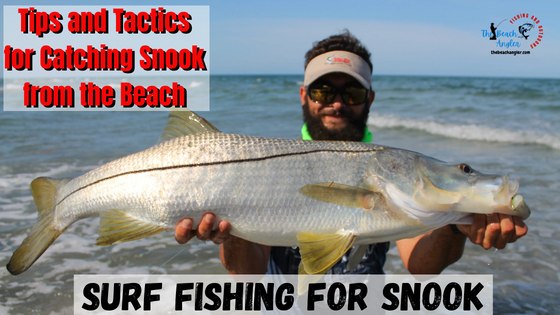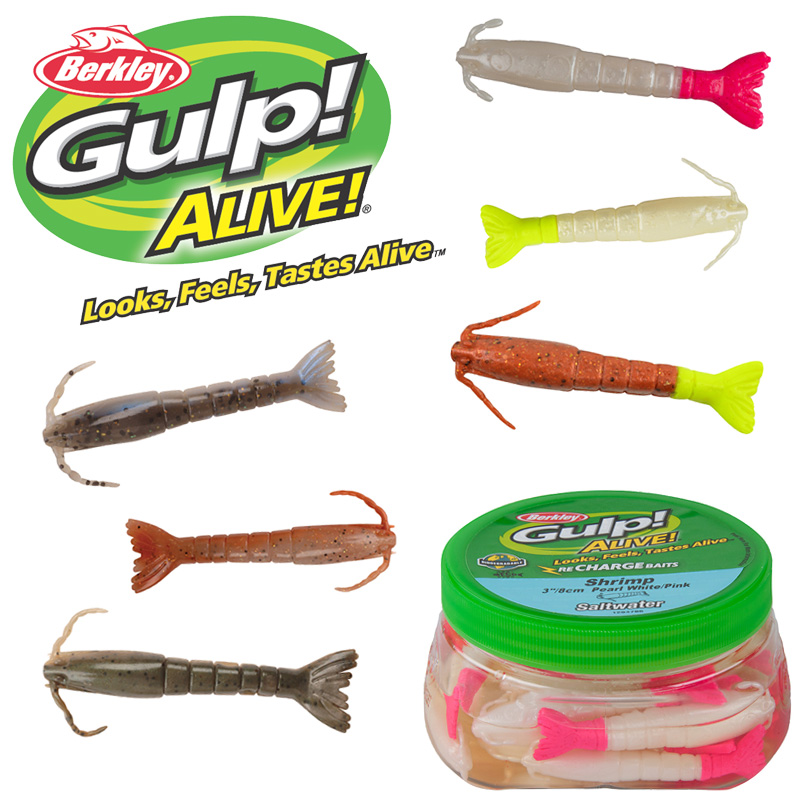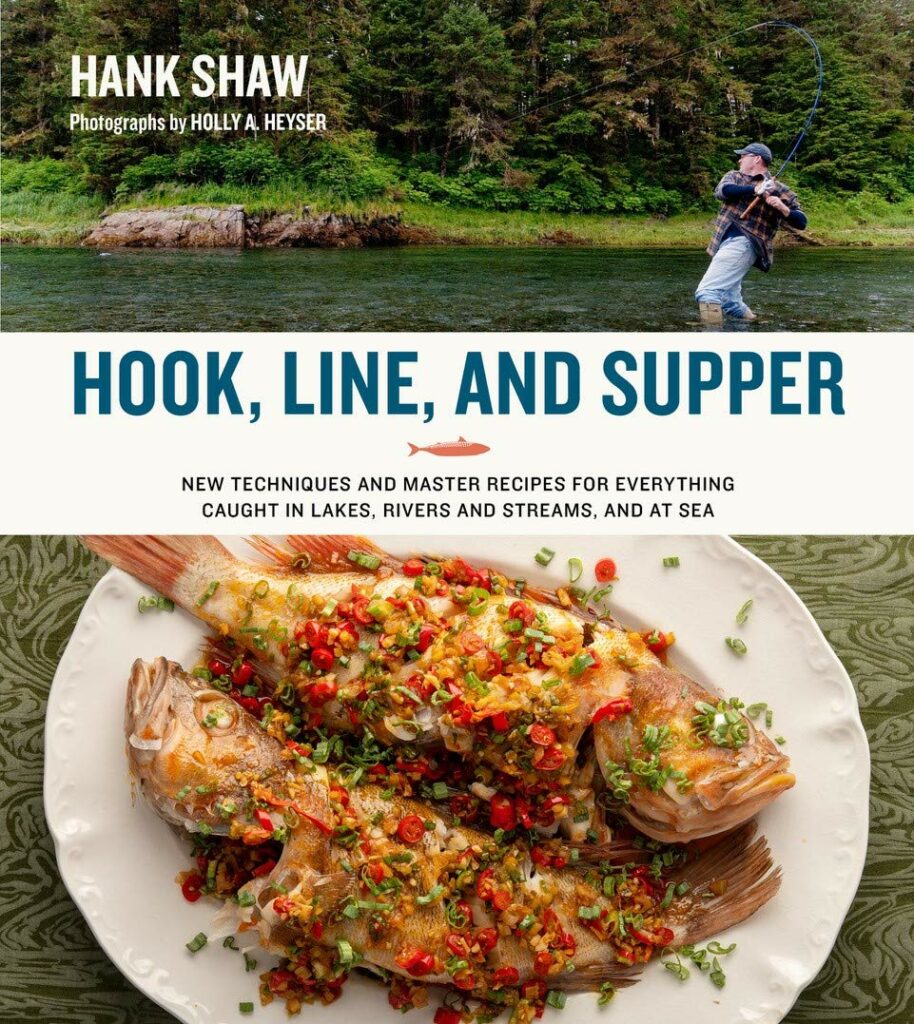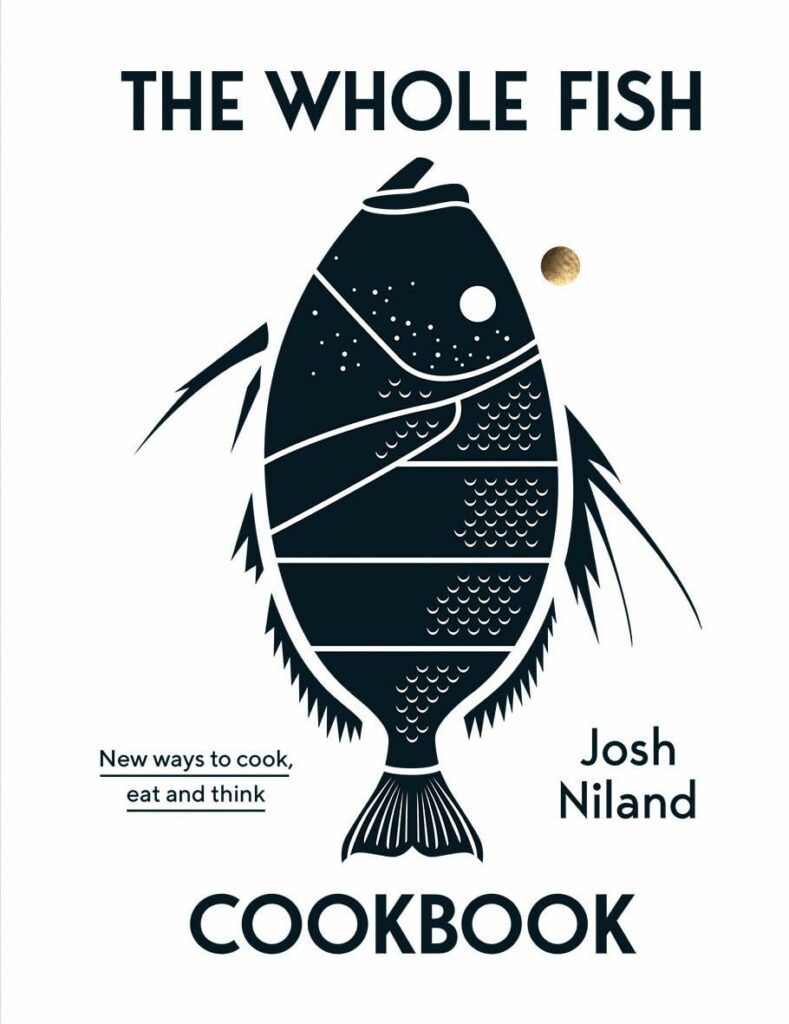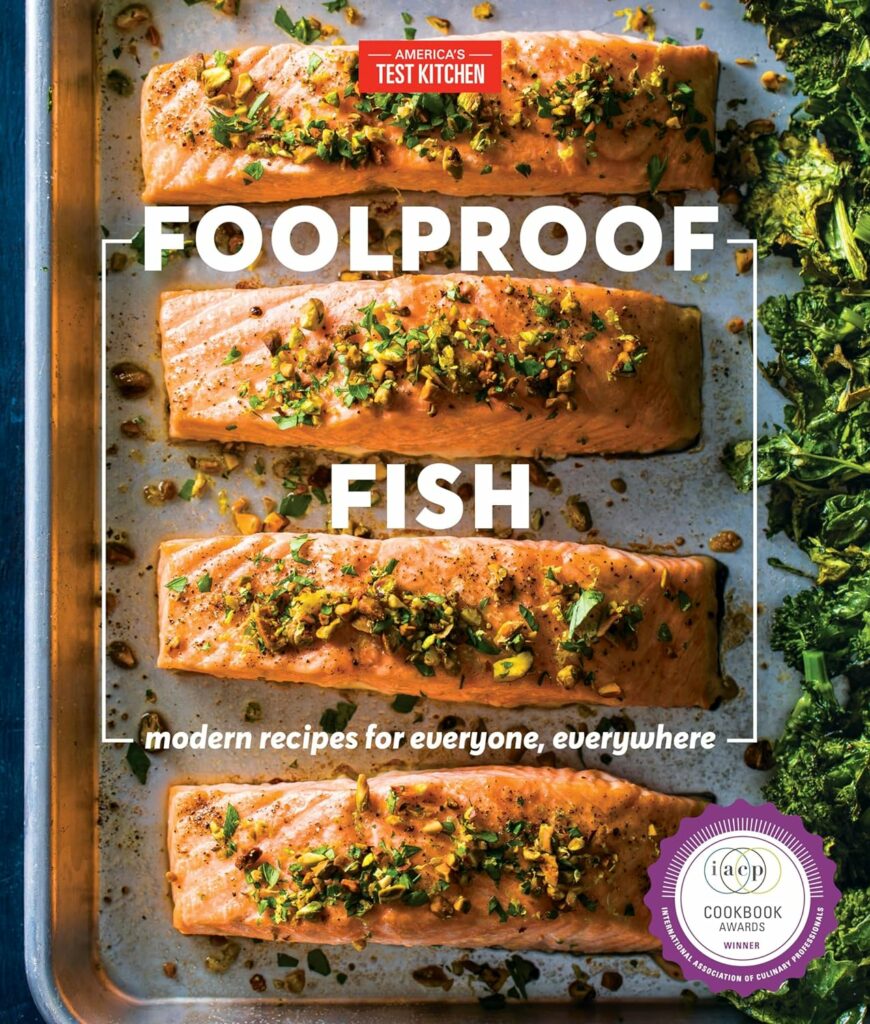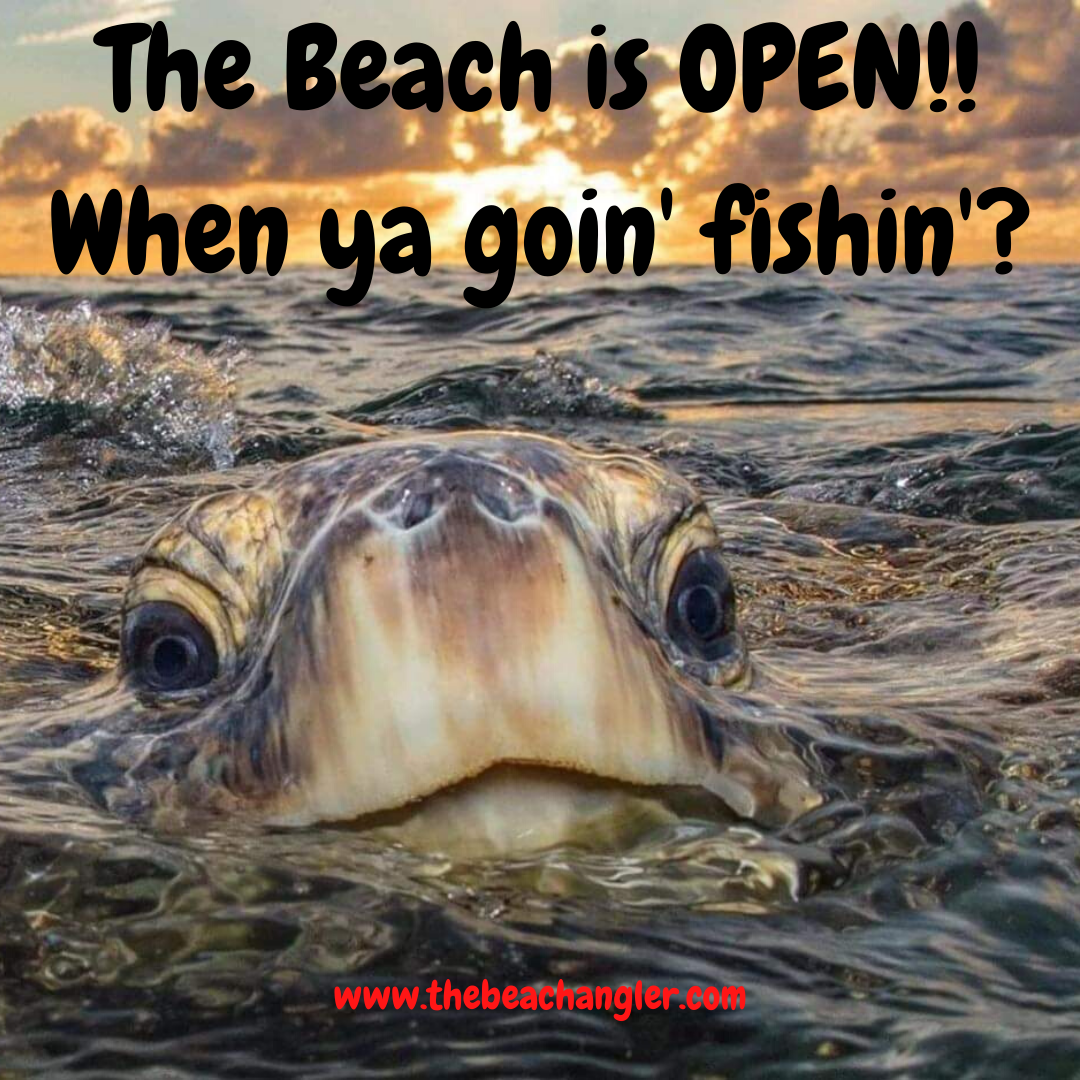Are you looking for a thrilling and challenging fishing experience? Surf fishing for snook might be just what you need. Snook are one of the most sought after saltwater gamefish species. They are a powerful, aggressive and beautiful fish that can be found in the warm waters of the Gulf of Mexico and the Atlantic Ocean. They are known for their aggressive behavior and for putting up a great fight when hooked.
Snook can be found cruising the shallow waters near the beach during the summer months making, Surf fishing for snook, a thrilling and rewarding way to target one of the most sought-after saltwater game fish.
Key Takeaways
- Snook are a popular game fish that can be found in shallow waters.
- Surf fishing for snook requires the right gear, bait, and technique.
- Understanding snook behavior and their habitat is crucial to catching them.
- Be patient. Snook can be difficult to catch, but with the right techniques and a little luck, you can land a trophy-sized fish.
- Follow the Legal limits and regulations. Keep what you can use, and carefully release the rest to preserve the population for future generations of anglers.
In this article, we will cover everything you need to know about surf fishing for snook, from understanding the fish, to the best techniques and gear to use, and some tips on how to catch them from the surf.
Understanding Snook
What is a Snook?
Snook is a common name for a group of marine fish in the family Centropomidae. There are 12 species of snook, and five of them live in U.S. waters. Snook are bony fish with long, slender bodies, two dorsal fins, and a large mouth with a protruding lower jaw.
Snook are popular targets for anglers, especially in Florida and the Gulf of Mexico. Snook are strong fighters and can grow to over 48 inches in length and can weigh up to 50 pounds or more. Snook are also prized for their meat, which is white, flaky, and delicious.
They migrate between the ocean and the backwaters depending on the season. Snook spawn in inlets during spring and fall, and move along the beaches during summer. Snook feed on various prey, such as crustaceans, shrimp, and baitfish.
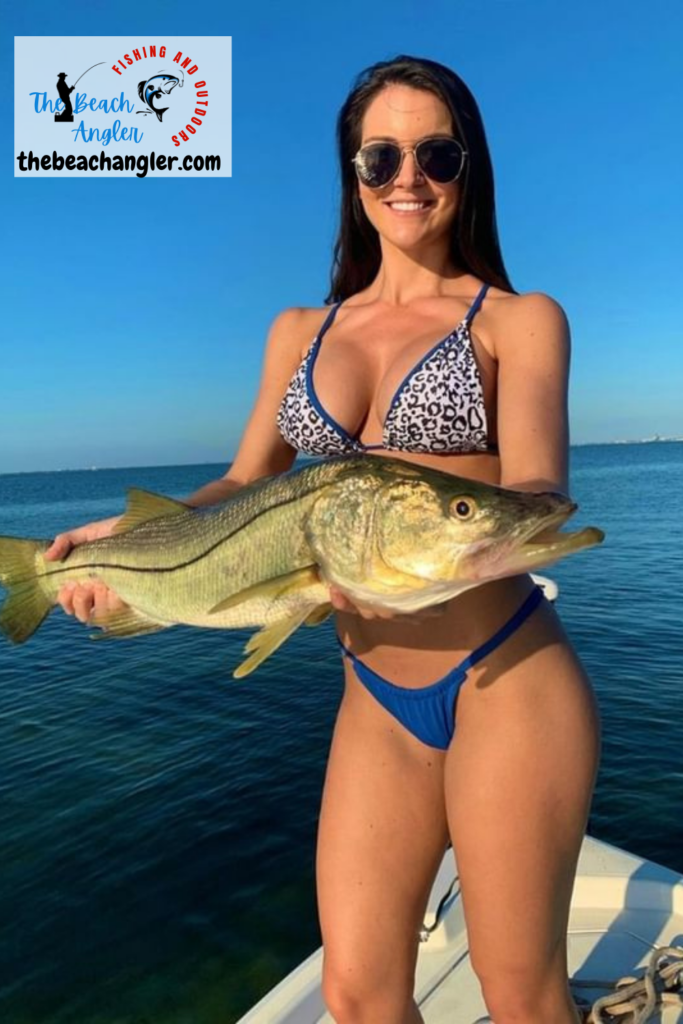
Understanding snook is the first step to catching them. Snook are a popular game fish that can be found in the southern Atlantic and Gulf coasts of the United States. They are known for their aggressive strikes and acrobatic fights. They can be found in shallow waters, such as beaches, inlets, and bays.
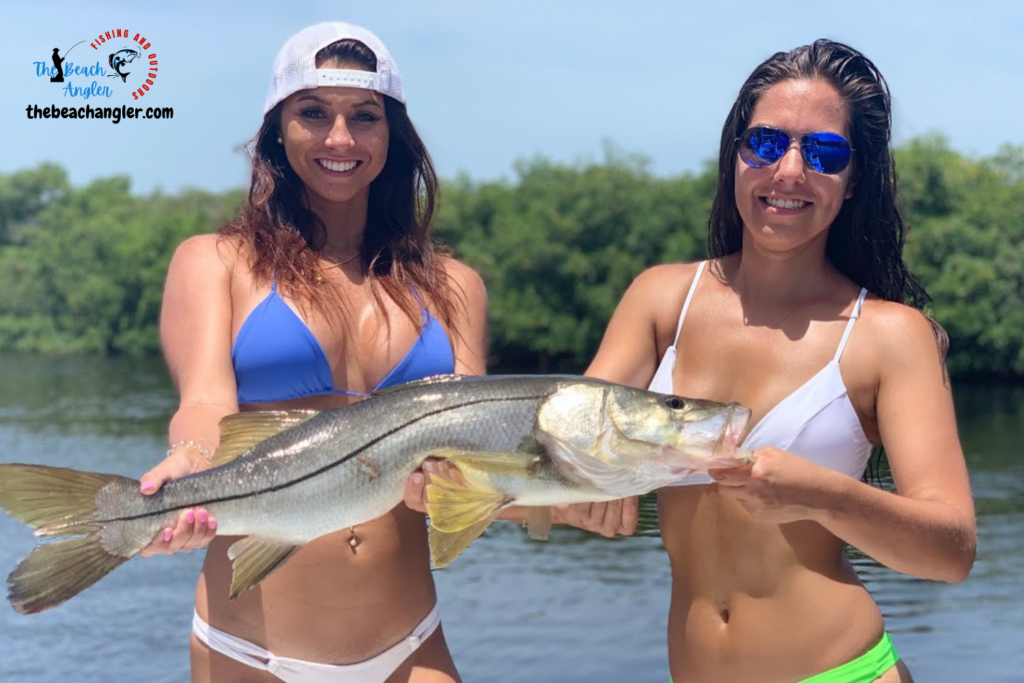
Snook prefer water temperatures above 60 degrees Fahrenheit. They are most active during the warmer months of the year and can be caught using a variety of baits and lures.
They are known for their distinct lateral line, which runs along their body and helps them detect prey. Here are some key things to understand when fishing for snook:
- Appearance: Snook have a distinctive black lateral line that runs from their gills to their tail. They are usually silver in color with a greenish back. They have a sloping forehead and a protruding lower jaw.
- Habitat: Snook can be found in a variety of habitats, including estuaries, mangrove swamps, and nearshore waters. They prefer water temperatures between 68 and 78 degrees Fahrenheit.
- Diet: Snook are opportunistic feeders and will eat a variety of prey, including shrimp, crabs, and small fish. They are most active during low-light periods, such as dawn and dusk.
- Behavior: Snook are known for their aggressive strikes and acrobatic fights. They are also known for their ability to ambush prey by hiding in structure such as rocks, docks, and mangroves.
- Regulations: Snook are a popular game fish and are regulated by state and federal agencies. It is important to check the regulations in your area before fishing for snook.
By understanding the appearance, habitat, diet, behavior, and regulations of snook, you can increase your chances of catching these elusive game fish.
Surf Fishing for Snook: Tackle and Gear
Surf fishing is when you fish from the beach or shore, using a rod and reel or a fly rod, and cast your bait or lure into the waves. Surf fishing for snook can be very rewarding, especially when you sight cast to them as they cruise along the beach. To be successful, you will need to have the right gear, bait, and technique. In this section, we will cover the tackle and gear you will need when surf fishing for snook.
Snook are strong fighters that can easily break your line or straighten your hook if you are not prepared. You need a sturdy rod and reel combo that can handle the surf conditions and the snook’s power. You also need a strong leader material, such as fluorocarbon or wire, to prevent snook from cutting your line with their sharp teeth or gill plates You can use a swivel to connect your leader to your main line, and a loop knot to attach your lure or hook to your leader.
Rods and Reels for Snook
For snook fishing, you’ll want a medium-heavy rod that’s between 7 and 8 feet long. This length will give you the leverage you need to reel in these feisty fish. As for the reel, you’ll want something that’s durable and has a smooth drag system. A spinning reel is a good choice for most anglers.
- Rod: A 7-9 foot medium-heavy action spinning rod is ideal for surf fishing for snook. Look for a rod with a fast action that can handle a 20-30lb test line.
- Reel: A 4000 or 5000 size spinning reel, with a high line capacity is ideal for surf fishing for snook. Look for a reel that can handle at least 200 yards of 20-30lb test line.
- Line: Use a braided line with a fluorocarbon leader. A 20 – 30lb braid with a 30lb fluorocarbon leader is a good place to start.
Baits and Lures for Snook
Choosing the right bait for surf fishing is essential for attracting and hooking snook. Snook are voracious predators that will eat a variety of prey, but they can also be picky and selective depending on the conditions and their mood. They are opportunistic feeders that will eat a variety of prey, such as shrimp, crabs, mullet, pilchards, sardines, pinfish or sand fleas.
You can use live or dead bait, or artificial lures that mimic these natural foods. This is the most natural and effective bait for snook, as it mimics what they normally eat in the surf.
You can use mullet, whiting, croaker, pinfish, or greenbacks, either whole or cut into chunks.
You can catch your own baitfish with a cast net or buy them from a bait shop. You can use a fish finder rig with a 5/0 circle hook and a weight that matches the current and wave conditions. You can also use a popping cork or a float to suspend your bait above the bottom and attract more attention.
Snook can be caught on a variety of lures. Artificial Lures are a more convenient and versatile bait for snook, as it allows you to cover more water and experiment with different colors, sizes, and actions. Some of the best lures for snook are bucktail jigs, soft plastic jerkbaits, spoons, plugs or flies. Top-water lures are a great choice for snook and will produce some explosive surface action.
Some of the best top-water lures for snook include the Chugger, Zara Spook, and Mirro-Lure Top Dog. The key is to match the size and color of the baitfish in the area and to retrieve your lure with a fast and erratic action. Experiment with different lures to find what works best for you.
You can try fly fishing the surf for snook as well. This is a more challenging and rewarding bait for snook, as it requires more skill and finesse to present and manipulate your fly. You can use streamers, deceivers, clousers, or poppers that resemble baitfish or shrimp.
You can use a 9- or 10-weight fly rod with a floating or intermediate line and a 20- to 30-pound fluorocarbon leader. You can cast your fly parallel to the shore or at an angle towards the trough and strip it back with short and sharp jerks.
Some Good Artificials for Snook
Other Recommended Surf Fishing Gear
In addition to your rod, reel, baits, and lures, there are a few other pieces of gear you’ll want to have on hand when snook fishing. These include:
- Surf Fishing Rigs: Fishfinder rigs, Carolina Rigs and Pompano rigs are good choices.
- Hooks: Circle hooks are a good choice for snook fishing since they’re less likely to cause injury to the fish.
- Leader: A fluorocarbon leader can help prevent the fish from seeing your line and increase your chances of a hookup.
- Pliers: You’ll need a good pair of pliers to help you remove hooks from the fish’s mouth.
- Sun protection: Make sure you have sunscreen, a hat, and polarized sunglasses to protect yourself from the sun’s harmful rays.
- Personal Flotation Device: If wading the surf, it is always recommended that you wear a life jacket or PFD. It only takes a second for a rouge wave or rip current to pull you out to sea.
- Waders or wading boots: protect your feet from underwater hazards while wading the surf.
Essential Surf Fishing Gear:
- Surf Fishing Rods, surf rods are typically longer and heavier duty than standard rods. – read more.
- Surf fishing Reels,larger and stronger with greater line capacity to handle big fish. – read more.
- Surf fishing Rod and Reel Combos, pre-matched rod and reel set ups for surf fishing – read more.
- Sand Spike Rod holder, holds your rods securely while you wait for that big bite. – read more.
- Surf Fishing Rigs, terminal tackle for fishing the surf. – read more.
- Surf fishing Carts, for beaches that won’t allow vehicles you need a way to carry your gear – read more.
- Rod Racks for Vehicles, carry your rods out of harms way and easy to access- read more.
- Beach Camping Gear, in case you want to fish all night or for several days – read more.
By having the right tackle and gear, you’ll be well on your way to catching snook in the surf.
Ideal Locations for Finding Snook in the Surf
Finding a good spot for surf fishing is crucial for catching snook. Snook are not randomly distributed along the beach, but rather follow certain patterns and preferences that make some areas more productive than others. Snook like to hang out in areas where there is some structure, such as troughs, drop-offs, sandbars, rocks or jetties.
These places provide cover and ambush points for snook to feed on baitfish. You can use a map or an app to scout for potential spots, or you can walk along the beach and look for signs of snook activity, such as diving birds, splashes, boils or wakes.
Three Tips on How to Find a Good Spot for Snook in the Surf:
- Look for structure. Snook like to hang around features that provide them with cover, ambush points, or food sources. These can include drop-offs, sandbars, rocks, jetties, piers, or any other irregularity in the ocean bottom. Structure can also create currents or eddies that concentrate baitfish and snook.
- Look for bait. Snook are opportunistic feeders that will eat whatever is available and abundant in their environment. The presence of baitfish, such as mullet, whiting, croaker, pinfish, or greenbacks, is a good indicator of snook activity. You can also look for signs of baitfish on the surface, such as splashes, boils, or birds diving.
- Look for snook. The ultimate way to find a good spot for surf fishing is to actually see snook in the water. Snook are often visible in the clear and shallow water of the surf zone, especially during low light conditions. You can spot them by their distinctive shape, color, and stripes. Snook usually swim in small groups or solo along the first trough or near the structure. You can use polarized sunglasses and a hat to reduce the glare and improve your vision.
Best Destinations to try Surf Fishing for Snook
Snook are warm water fish that prefer temperatures above 60 degrees Fahrenheit. They are mostly found in Florida and the Gulf of Mexico, but they can also migrate to other states along the Atlantic coast. Snook tend to move in and out of the inshore waters depending on the season and the water temperature.

In the spring and fall, they often congregate near inlets, where they spawn and feed on shrimp and crustaceans. In the summer, they move to the beaches, where they feed on baitfish like mullet, anchovies, pinfish, and greenbacks. Here are some great destinations to consider for your next snook fishing trip:
1. Florida
Florida is one of the best places to surf fish for snook. With over 1,200 miles of coastline, there are plenty of spots to choose from. Some of the best areas to fish for snook in Florida include:
- Sanibel Island
- Sebastian Inlet
- Boca Grande Pass
- Fort Myers Beach
- Naples Pier
2. Gulf of Mexico
The Gulf of Mexico is another great location for surf fishing for snook. The warm waters of the Gulf provide the perfect habitat for snook. Some of the top Gulf locations to consider include:
- South Padre Island, Texas
- Gulf Shores, Alabama
- Gulfport, Mississippi
- Grand Isle, Louisiana
3. Caribbean Islands
If you’re looking for a more exotic location to surf fish for snook, the Caribbean islands are a great option. Some of the best islands to consider include:
- Puerto Rico
- St. Croix
- St. Thomas
- Jamaica
4. Bridges and Jetties
Bridges and jetties are also great locations to surf fish for snook. These structures provide cover for snook to hide and ambush their prey. Some of the best bridges and jetties to consider include:
- Skyway Fishing Pier State Park in Florida
- Matlacha Pass Bridge in Florida
- Sebastian Inlet Bridge in Florida
- Pascagoula River Bridge in Mississippi
- Gayman Bridge on Highway 48 Port Isabel, Texas
Remember, when choosing a location for surf fishing for snook, it’s important to consider the time of year, tides, and weather conditions. With a little research and preparation, you can increase your chances of catching that trophy snook.
Techniques of Surf Fishing for Snook
If you are looking to catch snook while surf fishing, there are some specific techniques that will improve your chances of success. It’s important to pay attention to the conditions and adjust your technique accordingly. Here are some tips to help you get started:
You need to set the hook firmly and quickly when you feel a snook take your bait, as they have hard mouths that can spit out your hook easily. You also need to keep your rod tip high and apply steady pressure to prevent snook from running into structure or jumping out of the water and throwing your hook.
Look for structure: Snook like to hang out around structure, so look for areas with rocks, jetties, or other features that provide cover.
Pay attention to the tides: Snook tend to feed more actively during incoming tides, so plan your fishing trips accordingly.
Use the right retrieve: Snook are sight feeders that rely on their vision to locate their prey. You need to present your bait or lure in a way that catches their eye and triggers their strike. Vary your retrieve speed and technique to find what works best for the conditions. Sometimes a slow, steady retrieve is best, while other times a faster, erratic retrieve can trigger a strike because it mimics the movement of an injured baitfish.
By using these techniques, you can increase your chances of catching snook while surf fishing. Remember to be patient and persistent, and you will be rewarded with a great catch.
The Best Times to Try Surf Fishing for Snook
One of the most important factors for surf fishing for snook is timing. Snook are seasonal fish that move along the coast depending on the water temperature, food availability, and spawning cycle. Knowing when and where to find them can make a big difference in your success rate.
The best time of year to surf fish for snook is from June to October, when they are in their spawning season. During this time, snook congregate near the beaches and inlets, where they can find plenty of baitfish and mates. Snook are more active and aggressive during this period, making them easier to catch and more fun to fight.
The best time of day to surf fish for snook is early in the morning or late in the evening, snook are most active during these low light conditions, or when there is cloud cover or choppy water. Snook are ambush predators that use the cover of darkness or shadows to attack their prey.

To increase your chances of catching snook in the surf, you need to pay attention to the weather, wind, and waves. Snook prefer clear and warm water, so avoid fishing after a storm or a cold front, when the water is murky or chilly. Snook also like moderate waves, which create oxygen and turbulence that attract baitfish. Avoid fishing when the waves are too big or the surf is too flat, which can make snook wary or inactive.
After the Catch: Care and Handling of Snook
As an angler, it is important to practice responsible fishing techniques and do your part in conserving the snook population. Snook are a prized game fish, and they are very good to eat, but they are also a vital part of the ecosystem. Here are some tips to help protect snook populations:
Handle with Care – When you catch a snook, make sure to handle it with care. Wet your hands before handling the fish to avoid removing their protective slime layer. If you must use a net, use a rubber or knotless mesh net to avoid damaging the fish. Avoid holding the fish vertically, as this can cause damage to their internal organs.
Release with Care – If you plan on releasing the snook, do so quickly and carefully. Avoid removing the fish from the water if possible, and use a de-hooker to remove the hook. If the hook is deeply embedded, cut the line as close to the hook as possible. Revive the fish in the water by holding it by the tail and gently moving it back and forth until it swims away on its own.
Follow Regulations – Make sure to follow all fishing regulations and size limits set by your state or local authorities. These regulations are put in place to protect the snook population and ensure their sustainability for future generations. Keep only what you need and release the rest.
By practicing responsible fishing techniques and following regulations, you can help protect the snook population and ensure their sustainability for future generations.
Safety Measures for Surf Fishing
When it comes to surf fishing for Snook, safety should always be your top priority. Here are some safety measures you should take to ensure a safe and enjoyable fishing experience:
Check the Weather and Tides – Before heading out, make sure to check the weather and tide conditions. Avoid fishing during thunderstorms, strong winds, or rough seas. High tide is generally the best time to fish, but make sure to stay aware of the tide schedule to avoid getting caught in rising waters.
Wear Appropriate Clothing and Gear – Make sure to wear appropriate clothing and gear for the conditions. This includes a life jacket, waders, or waterproof boots if necessary. Wear sunscreen and a hat to protect yourself from the sun.
Be Aware of Your Surroundings – Always be aware of your surroundings, including other anglers, swimmers, and wildlife. Avoid casting near people or animals, and be cautious of rip currents and strong waves.
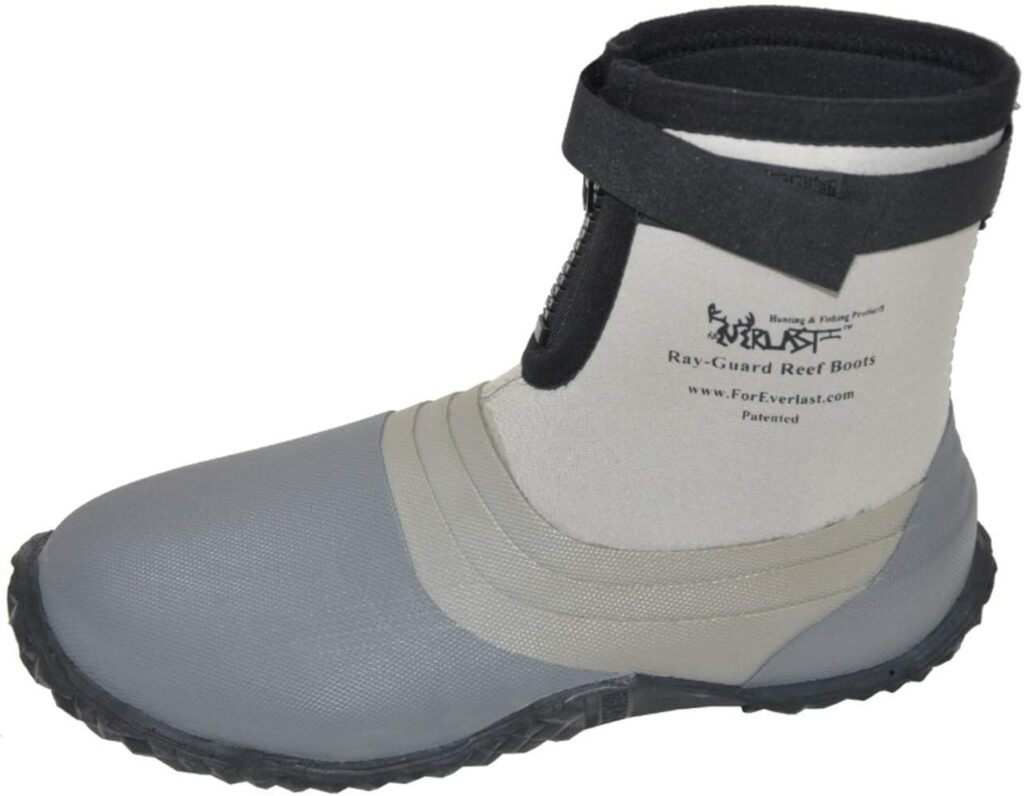
Handle Fish with Care – When handling fish, make sure to do so with care. Use a de-hooking tool to safely remove the hook and release the fish back into the water. If you plan on keeping the fish, make sure to follow local regulations and properly clean and store the fish.
Bring a First Aid Kit – Accidents can happen, so it’s always a good idea to bring a first aid kit with you. This should include items such as bandages, antiseptic, and any necessary medications.
By following these safety measures, you can ensure a safe and enjoyable surf fishing experience for yourself and others around you.
Cleaning and Cooking Snook
How to Clean a Snook
There are 3 primary methods of cleaning snook depending on your preference and how you will be preparing them for the table: Gutting and scaling, Filleting, and Steaking.
1. Gutting and scaling is one of the most common ways to clean a snook. You will need a sharp knife, a cutting board, and a bucket. First, cut along the belly of the fish, from the gills to the anus. Open the stomach cavity and remove the guts, gills, and other organs. Discard them in the bucket. Next, use the knife to scrape off the scales from the fish, starting from the tail and moving towards the head. Rinse the fish under cold water and pat it dry.
2. Filleting is the most popular way to clean a snook. You will need a sharp knife, a cutting board, and a bowl. First, cut behind the gill cover and slice down to the backbone. Then, turn the knife and cut along the backbone, following the contour of the fish. Lift the fillet off the fish and place it in the bowl. Repeat on the other side. Next, remove any bones or skin from the fillets using the knife or tweezers. Rinse the fillets under cold water and pat them dry.
3. Steaking is another way to clean a snook. You will need a sharp knife, a cutting board, and a bowl. First, cut off the head and tail of the fish and discard them in the bucket. Next, cut across the fish at an angle, making slices that are about an inch thick. Place the steaks in the bowl. Next, remove any bones or skin from the steaks using the knife or tweezers. Rinse the steaks under cold water and pat them dry.
How to Cook a Snook?
Snook make great table fare and lend themselves well to a variety of cooking methods. Three of the most common are grilling, baking, and, of course, frying.
1. Grilling is one of the most popular and delicious ways to cook snook. You will need a grill, a knife, salt, pepper, and lemon wedges. First, scale and gut the snook and cut it into 6-8 ounce portions. Then, season the fish with salt and pepper and place it on a hot grill. Cook for 3-4 minutes per side, or until the fish is flaky and opaque. Serve with lemon wedges and enjoy.
2. Baking is a simple and healthy way to cook snook. You will need an oven, a baking dish, salt, pepper, and any other spices you like. Preheat the oven to 400 degrees Fahrenheit and place the snook in a baking dish. Season the fish with salt, pepper, and your favorite spices. Bake for 10-12 minutes, or until the fish is cooked through. Serve with a sauce of your choice or eat as is.
3. Frying is a quick and easy way to cook snook. You will need a skillet, oil, salt, pepper, and flour. Heat some oil in a large skillet over medium-high heat. Season the snook with salt and pepper and coat it lightly with flour or your favorite fish fry batter. When the oil is hot, add the fish and fry for 2-3 minutes per side, or until golden and crispy. Drain on paper towels and serve with tartar sauce or aioli.
Surf Fishing for Snook: A Great Day on the Beach
Surf fishing for snook can be a thrilling and challenging experience and is a great way to enjoy the beach and catch some trophy fish. With some basic knowledge and skills, you can have a successful and fun snook fishing adventure from the surf. If you follow these tips and use the right gear and techniques, you can increase your chances of success and enjoy the beauty of the ocean while catching one of the most sought-after game fish in the world.
It requires some skill and patience, your will need to find a likely location where snook are known to hang out, then you need to cast accurately and retrieve your bait or lure at the right speed and depth to entice a strike. You will need to use a sturdy rod and reel with a heavy fluorocarbon leader and a sharp hook to land these fish. And, you better be ready for a fight, as snook are strong and fast fish that can run, jump, and shake their heads to throw off your hook.

Here are some key takeaways to keep in mind when surf fishing for snook:
- Look for signs of activity such as leaping mullet and diving birds to find snook.
- Use the right gear, including a medium-heavy rod, 20-30 lb test line, and a fluorocarbon leader.
- Use live bait such as mullet, pinfish, or shrimp to attract snook.
- Fish during low-light periods at dawn and dusk for the best chance of catching snook.
- Be patient and persistent. Snook can be difficult to catch, but with the right techniques and a little luck, you can land a trophy-sized fish.
- Know and follow the Legal limits and regulations. Keep what you can use, and carefully release the rest to preserve the population for future generations of anglers.
As always, stay safe, enjoy the journey and please try to leave it cleaner than you found it. If you have any comments, questions, ideas or suggestions please leave them in the comment section below and I’ll get back to you asap. You can follow us on Facebook: Rex The Beach Angler, Instagram: thebeachangler7, Twitter: @AnglerBeach, and YouTube: Man Art Creations.
P.S. – Thanks so much for checking out our blog we really appreciate it. Just so you know, we may receive a commission if you click on some of the links that appear on our site. This helps us keep our content free and up-to-date for everyone. We appreciate your support!
Surf Fishing for Snook Frequently Asked Questions
Can you catch snook surf fishing?
Yes, snook can be caught surf fishing. Look for troughs or channels where snook are likely to be feeding and use live bait or lures to entice them. Surf fishing for snook can be challenging, but it can also be very rewarding.
What is the best bait for surf fishing for snook?
The best bait for surf fishing for snook depends on the season and location. During the summer, live bait such as pilchards, mullet, and pinfish work well. In the winter, shrimp and sand fleas are popular choices. Cut bait such as mullet or ladyfish can also be effective.

How do you catch snook on the beach?
To catch snook on the beach, look for troughs or channels where the snook are likely to be feeding. Use a 20lb braid as the main line with a 30lb fluorocarbon leader. Live bait such as pilchards or mullet can be effective, as well as lures such as jigs or topwater plugs. Cast your bait or lure into the trough and retrieve it slowly.
What is the best tide for snook fishing?
The best tide for snook fishing is typically the incoming tide. As the tide comes in, baitfish are pushed towards the shore, which attracts snook. However, outgoing tides can also be productive, especially if there are channels or troughs where snook can ambush baitfish.
When do snook run the beaches?
Snook can be found on the beaches year-round, but they are most active during the warmer months. In Florida, snook season runs from May 1st to August 31st and from December 1st to the end of February. During these times, snook are more likely to be feeding and can be caught on the beaches.
What is the Flair Hawk snook jig?
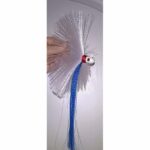
The Flair Hawk snook jig is a popular lure for catching snook in Florida. It is a bucktail jig with a mylar skirt that creates a lot of flash in the water. The Flair Hawk can be fished on the bottom or retrieved through the water column and is effective for catching snook in a variety of situations.
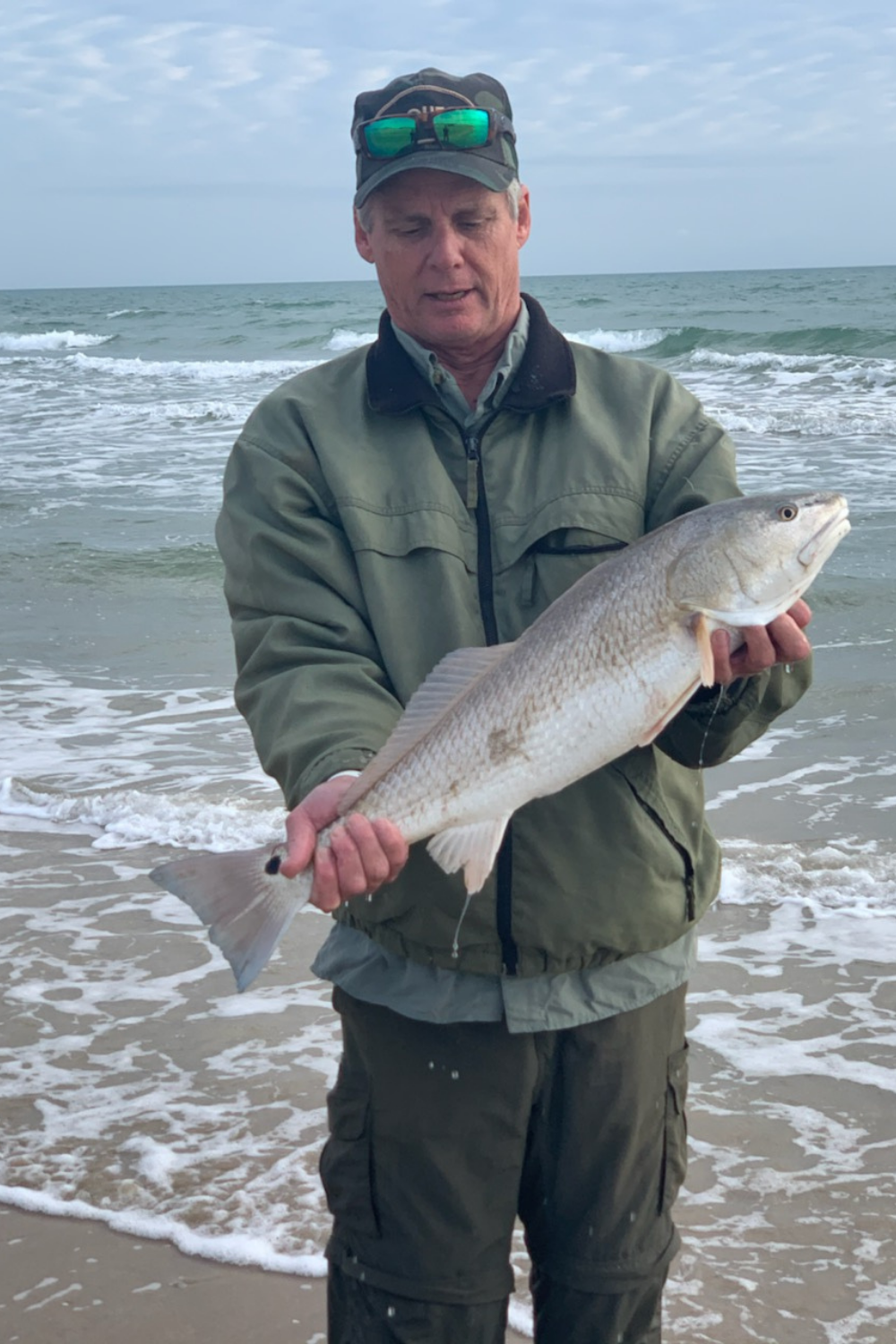
A life long surf fisherman with 50+ years of experience, I am also an avid hunter and outdoorsman. I will be sharing my passion for the outdoors with you so be prepared for hunting, fishing, camping, hiking and more. Along with gear reviews and the latest trends and innovations in the outdoor industry.
